





Goals, Targets and Indicators
Ambitious, achievable and evidence-based road safety targets are an essential part of a strategy to reduce road deaths and injuries.
Sustainable Development Goals (SDGs)
On 1 January 2016, the 17 Sustainable Development Goals (SDGs) of the 2030 Agenda for Sustainable Development were adopted. There are two targets that specifically address road safety: SDG target 3.6 on halving the number of global deaths and injuries from road traffic crashes; and SDG target 11.2 on providing access to safe, affordable, accessible and sustainable transport systems as well as improve road safety for all. However, road safety also has links to many related targets, such as SDG target 1 on poverty, SDG target 5 on gender equality, and SDG target 8 on decent work and economic growth.
Decade of Action for Road Safety 2021-2030
In September 2020, the UN General Assembly adopted resolution A/RES/74/299 “Improving global road safety”, proclaiming the Decade of Action for Road Safety 2021-2030, with the ambitious target of preventing at least 50% of road traffic deaths and injuries by 2030. WHO and the UN regional commissions, in cooperation with other partners in the UN Road Safety Collaboration, have developed a Global Plan for the Decade of Action.
Global Road Safety Performance Targets
Following a request of the World Health Assembly (WHA) in 2016, the World Health Organization (WHO) collaborated with other United Nations agencies and regional commissions and the UNRSC to develop 12 voluntary Global Road Safety Performance Targets. Consensus on the targets among United Nations Member States was achieved in 2017. Towards the 12 voluntary global targets for road safety provides guidance to countries on how to operationalize and utilize these targets.
Road Safety Key Performance Indicators (KPIs)
Road safety Key Performance Indicators (KPIs) are used to measure progress and effectiveness of road safety initiatives. By regularly monitoring KPIs, an understanding of issues affecting different safety performance can be developed and initiatives can be adjusted accordingly. The Sum4All Global Tracking Framework 2.0 provides examples safety indicators that support SDG Target 3.6, the BASELINE project provides examples of road safety KPIs in EU Member States while global road safety infrastructure KPIs have been developed by iRAP.
Reliable and accurate road safety data is essential in planning effective safety policy and treatments and monitoring performance.
Related Images
 12 Global Road Safety Targets
12 Global Road Safety Targets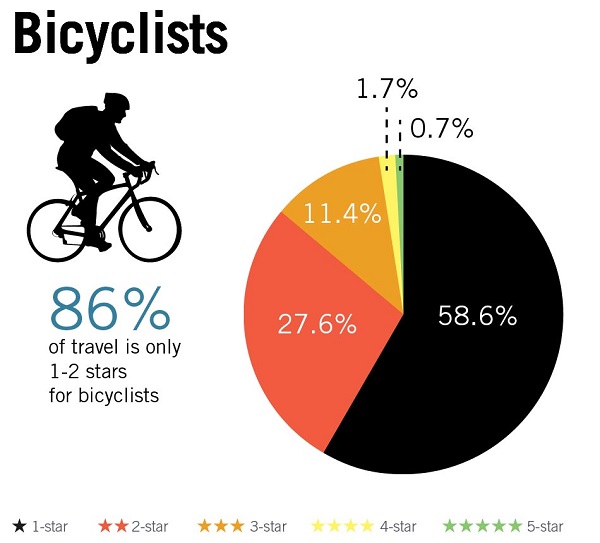 Bicyclist Star Ratings by road user type based on a 358,000km sample of roads across 54 countries. Image credit: iRAP
Bicyclist Star Ratings by road user type based on a 358,000km sample of roads across 54 countries. Image credit: iRAP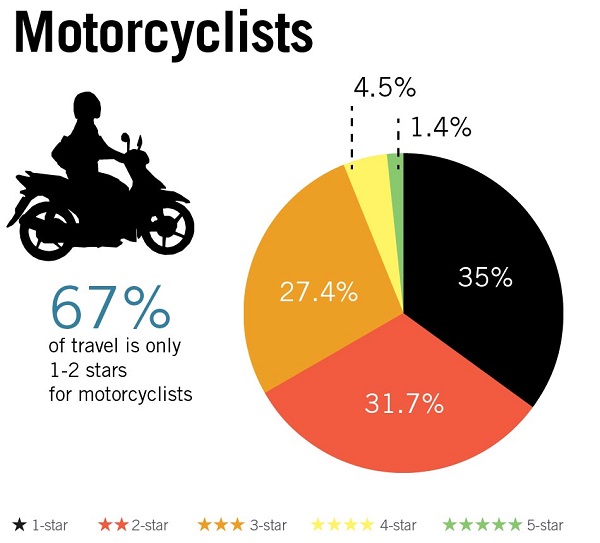 Motorcyclist Star Ratings by road user type based on a 358,000km sample of roads across 54 countries. Image credit: iRAP
Motorcyclist Star Ratings by road user type based on a 358,000km sample of roads across 54 countries. Image credit: iRAP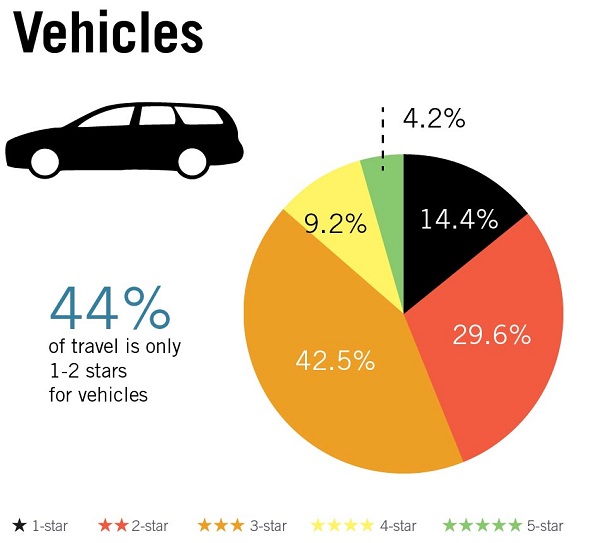 Vehicle occupant Star Ratings by road user type based on a 358,000km sample of roads across 54 countries. Image credit: iRAP
Vehicle occupant Star Ratings by road user type based on a 358,000km sample of roads across 54 countries. Image credit: iRAP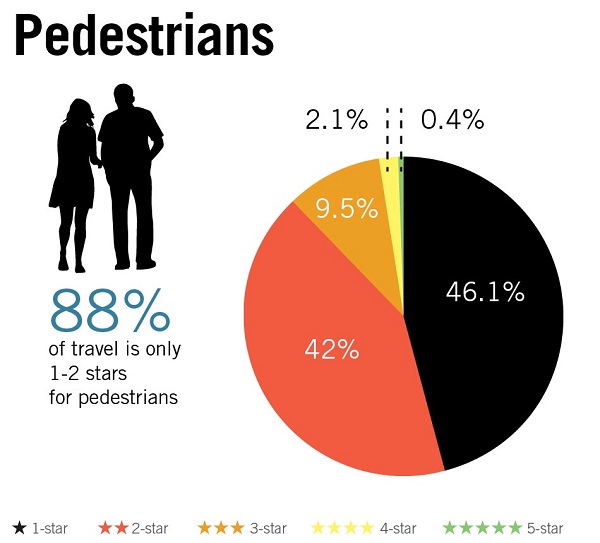 Pedestrian Star Ratings by road user type based on a 358,000km sample of roads across 54 countries. Image credit: iRAP
Pedestrian Star Ratings by road user type based on a 358,000km sample of roads across 54 countries. Image credit: iRAP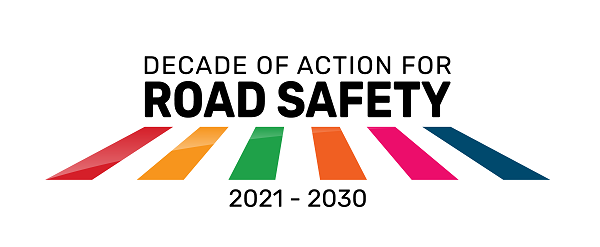 Decade of Action for Road Safety Logo - Colour
Decade of Action for Road Safety Logo - Colour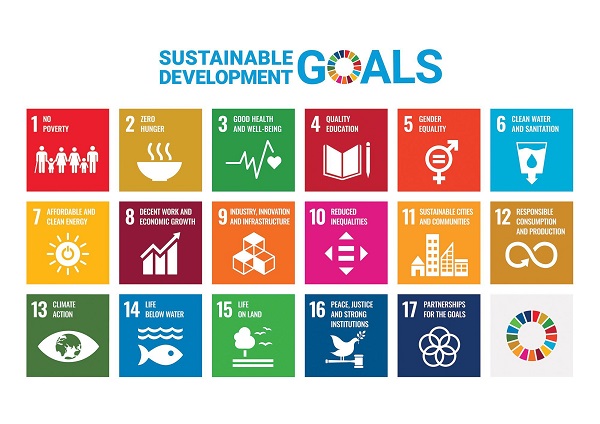 Sustainable Development Goals
Sustainable Development Goals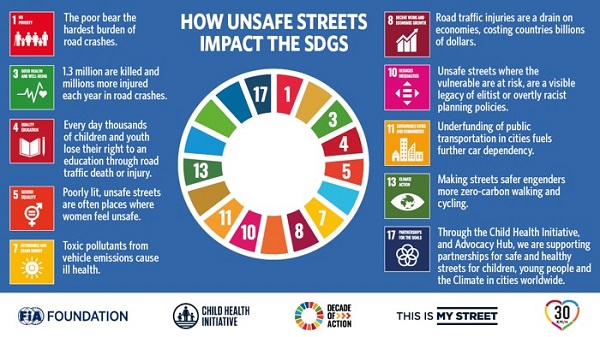 Sustainable Development Goals (SDG) and road safety source. Image credit: FIA Foundation
Sustainable Development Goals (SDG) and road safety source. Image credit: FIA Foundation








